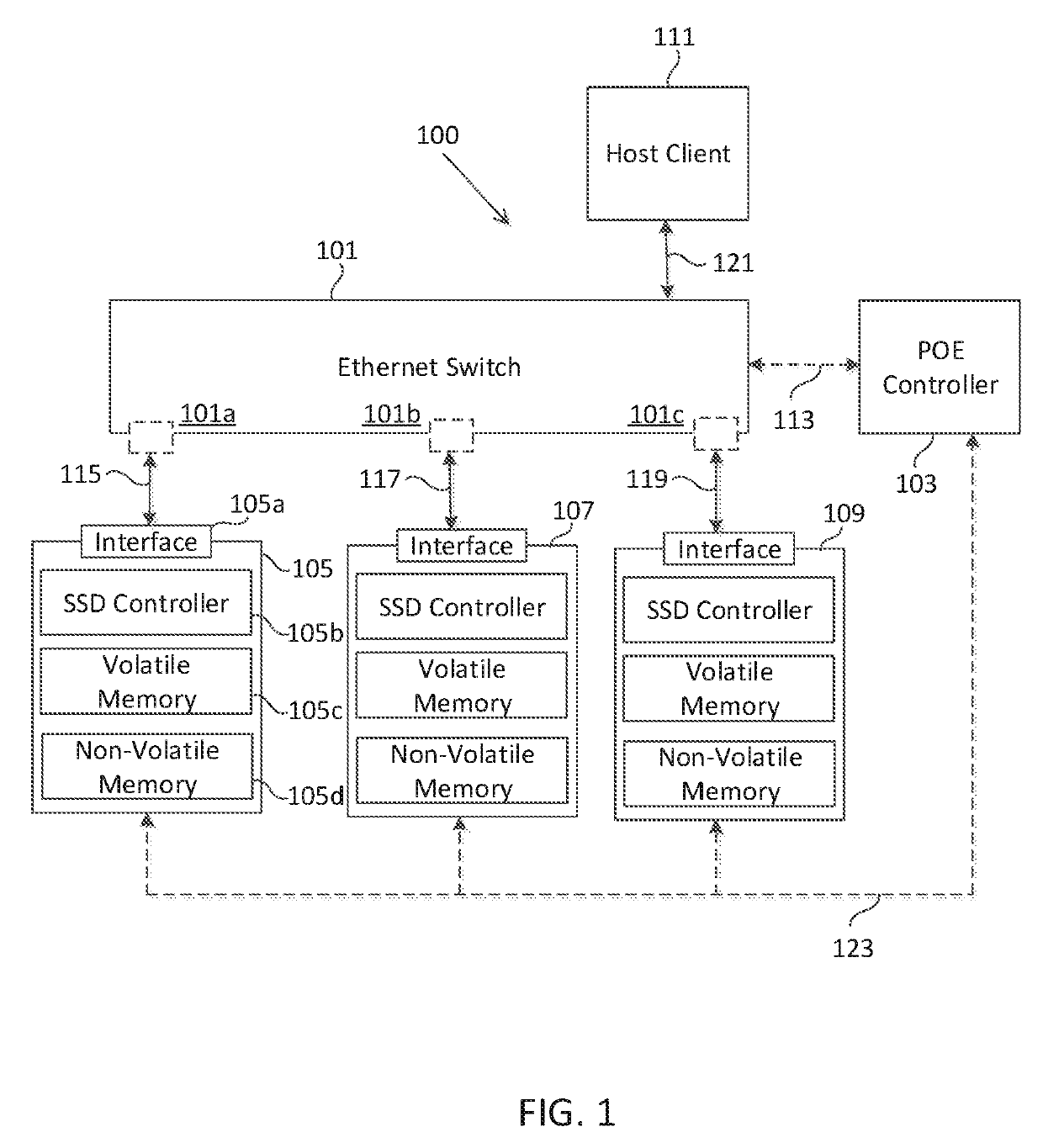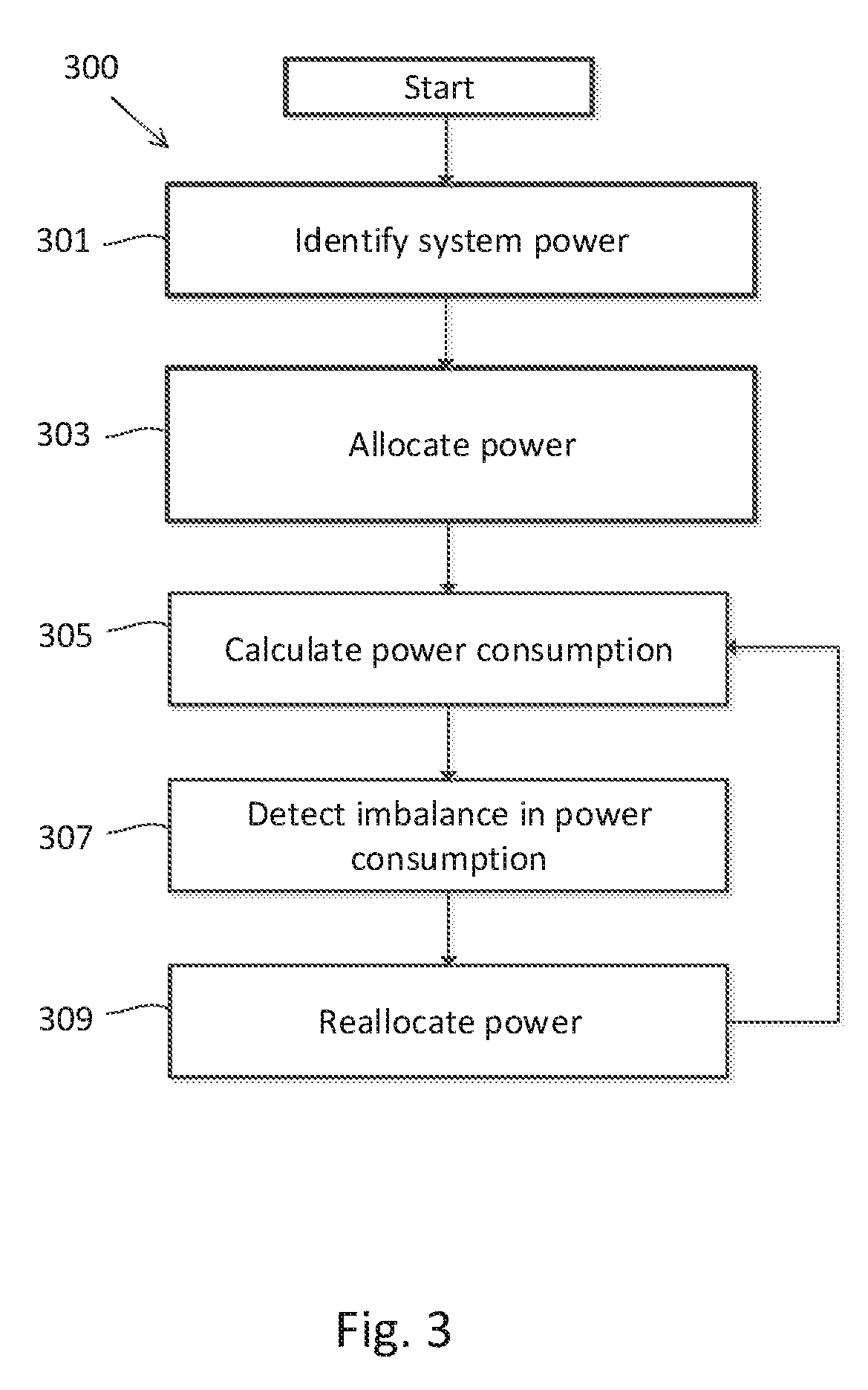Power management for solid state drives in a network
a solid-state drive and network technology, applied in the direction of power supply for data processing, input/output to record carriers, instruments, etc., can solve the problems of occupying significant rack space for ssds, occupying enclosures themselves significant real estate, and traditional host hdd interfaces are not capable of taking full advantage of ssd performance, etc., to achieve the effect of managing the power consumption
- Summary
- Abstract
- Description
- Claims
- Application Information
AI Technical Summary
Benefits of technology
Problems solved by technology
Method used
Image
Examples
Embodiment Construction
[0022]FIG. 1 is a block diagram illustrating one embodiment of SSDs in a network 100. An Ethernet switch 101 communicates with a POE controller 103 over connection 113, a plurality of SSDs 105, 107, and 109 over connections 115, 117, and 119 respectively, and a host client 111 over connection 121. The host client 111 may communicate with the Ethernet switch 101 using a standard Ethernet port, or any known method in the art, including, but not limited to, a PCIE port, and / or a UART port (among others). In one embodiment, any number of host clients 111 may communicate with Ethernet switch 101. The Ethernet switch 101 includes a plurality of Ethernet ports, 101a, 101b, and 101c that can be used to connect one or more Ethernet devices. In one embodiment, Ethernet switch 101 is capable of providing power to a device connected to each of the available Ethernet ports 101a, 101b, and 101c (i.e., “power over Ethernet” or “POE”). In one embodiment, one or more of the available Ethernet ports ...
PUM
 Login to View More
Login to View More Abstract
Description
Claims
Application Information
 Login to View More
Login to View More - R&D
- Intellectual Property
- Life Sciences
- Materials
- Tech Scout
- Unparalleled Data Quality
- Higher Quality Content
- 60% Fewer Hallucinations
Browse by: Latest US Patents, China's latest patents, Technical Efficacy Thesaurus, Application Domain, Technology Topic, Popular Technical Reports.
© 2025 PatSnap. All rights reserved.Legal|Privacy policy|Modern Slavery Act Transparency Statement|Sitemap|About US| Contact US: help@patsnap.com



